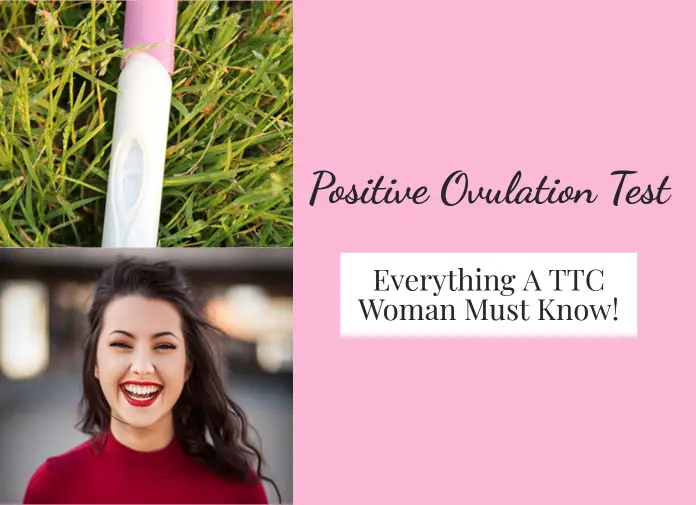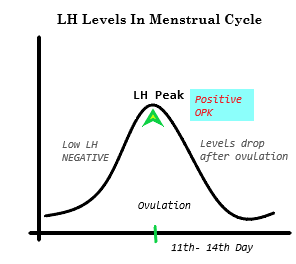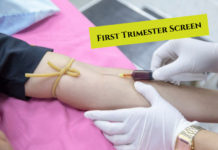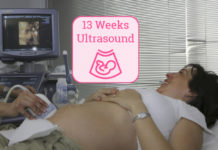A positive ovulation test is a result your test strip gives when you’re about to ovulate or just ovulated.
There are many questions about ovulation that can’t have a general answer. And that’s why more than knowing about OPK and kits, you have to get involved with your own body.
Ovulation is not an anniversary that repeats on a date or day, there are fluctuations. One month you may ovulate on a 14th day as they all say and another month you might not. What is constant, are the cues your body gives before ovulation.
Ovulation strips to detect fertility period are just like pregnancy tests. The only difference is that they look for another hormone, LH (Luteinizing Hormone). Another thing is for how long after a positive ovulation test is you fertile.
You ask any fertility counselor and they’ll tell you that this is the biggest confusion every couple has. How long after a positive ovulation test can I have sex?
But before answering the big doubt, let’s first learn the 101 of ovulation, fertility window, OTKs, and positive ovulation test.

Ovulation and Fertility Window
For conception, you require a sperm and an egg. Every month ideally either of the ovaries releases an ovum through a process termed ovulation.
Sperms can survive in a female’s body up to 5 days in different locations of the vaginal tract. Once the egg is released from the ovary it is only viable for 24 hours.
Thus, fertility period for every woman with a regular period cycle is around 4-5 days every month near ovulation. However, fertility experts mention that the study of chances of getting pregnant in these 5 days was done disregarding the possibility outside this period. Which of course isn’t true. Every woman has a certain chance of getting pregnant every month due to fluctuations in a cycle.
Menstrual Cycle And The Hormones Of Ovulation
Your menstrual cycle is under tight regulation of brain and ovarian hormones. The hormones that release from the anterior pituitary (brain) trigger the ovaries to produce secondary hormones. These chemical messengers guide your body to ovulate and get ready to conceive.
The 3 main hormones regulating ovulation are LH- Leutenizing Hormone, estrogen, and progesterone. While directly estrogen and progesterone don’t cause ovulation, their levels send feedback for LH.
During the menstrual cycle, several eggs begin maturing together. One of them is a dominant follicle and rest degrade or stall growth. Adding layers to the dominant follicle makes it bigger and bigger.
By the 11th-day estrogen levels from the dominant follicle peak up and then dramatically fall steeply within a few hours. The degraded estrogen sends a message for LH to peak up suddenly the next day. Another hormone FSH – Follicle stimulating hormone also gets a small peak simultaneously.
Fertility monitors, OTKs or OPKs determine this peak to detect ovulation and give a positive test. After 36 hours from LH peak, the ovary releases the egg into the adjacent fallopian tube.
What happens after a positive ovulation test?
Once ovulation occurs the cover of the egg now regressed starts releasing the different hormone. Thus, there is a drastic switch in levels of hormones near ovulation.
The egg waits inside the fallopian tubes for sperm. Misao Fukuda conducted a study stating that right side ovulation favors pregnancy 1. Thickening of endometrial lining stops and it starts producing prostaglandins. 1 DPO the egg loses its viability and decomposes.
Determining the fertility window helps in getting pregnant faster. How? One can use various methods whether manual or with OPKs.
Within 2-4 months of monitoring ovulation, you’ll be able to pinpoint all events and feel what’s happening inside. No fertility monitor or app can substitute for a woman aware of her body. Being patient and paying attention can save you from burnout.

Leutenizing Hormone And Fertility: Reason For Positive Ovulation Test
The Luteinizing Hormone controls puberty and release of secondary hormones in both men and women. Normal levels of LH in women vary during the menstrual cycle. During ovulation, the levels of LH can rise up to 70 IU/L from 12.5 IU/L in the pre-ovulation phase of the cycle. Range of LH levels during ovulation lie between 8-75 IU/L.
In a blood test for LH, the abnormal results lie beyond the normal range. High levels of LH in women are because of ovary problems or low production of sex steroids. Premature ovarian failure and PCOS produce high LH leading to infertility. Low levels could mean that the pituitary gland in the brain isn’t functioning properly. Such women will have irregular periods.
Ovulation test kits showing negative results for long can be because of low LH levels. Detecting ovulation with an irregular period poses this problem.
Unlike hCG which is the target of pregnancy tests, LH is present in the female body throughout beyond puberty. So you’ll always see a faint band in the test zone of OTK or test strip.
Dark test band of ovulation test is a positive result. Getting a positive test and yet not being able to get pregnant is a sign of excess LH production.
Ways to Find Out Ovulation Date and Fertility
1) Using Your Period Date
Some women have cycles that are as punctual as a clock! Whether you consider that luck or effort to stay healthy, they can use the calendar and pinpoint ovulation. The guess methods don’t work. It’s only useful if your cycle has been following a pattern since long.
Pros:
- No tests needed, cheap and easy
- Can work for conception and contraception
Risks:
- Stress, sickness and other factors can come into play anytime and cause an unpredictable fluctuation
2) Cervical Mucus Method
The Egg White Stringy Cervical Mucus (EWCM) is typical of ovulation. Ovulatory hormones lead to a change in the quality and quantity of cervical mucus. Change in color and texture of cervical mucus is visible and evident. Using tampons, lubes and intimate hygiene products can interfere with the natural production of mucus. Near ovulation, the mucus adopts a stringy white appearance to facilitate sex and mobilize sperms high up into tubes.
Pros:
- No Tests needed
- Visible signs to rely on
- Suitable for women with irregular periods
- Fair accuracy
- Helps assess fertility and identify any problems too
Risks:
- Yeast infections and sexual intercourse can cause a change in mucus without ovulation.
- Not having enough mucus requires insertion of the finger which can be uncomfortable.
3) Cervical Position Method
The cervix is inside the vagina. Depending on the stage in the menstrual cycle the cervix can be at high, medium or low depth. When ovulation is about to occur the cervix reaches high up. This allows the coming sperms to travel a short distance and reach the egg. Using your fingers you can check the depth of cervix and predict ovulation.
Pros:
- Predicts fertility period as cervix rises up before ovulation
- No tests or drugs needed
- Tells more about the tilt and location of your cervix making you aware of your body
Risks:
- Some women may find it hard to sense the change in depth
- Cervix position gets affected by sex
- Lower accuracy – requires a conjunction method
4) BBT Charting
One of the most common and longest methods for detecting ovulation is BBT charting. The principle of this method is the rise is BBT after ovulation. When the LH peak falls there is a thermal shift in body temperature. Not more than 1° C or 1/2°C change the body temperature drops soon if you don’t conceive. For women who get pregnant, the BBT chart shows a second rise and dip near implantation.
Pros:
- Easy to do and clean method, non-messy
- Gives a chance of detecting pregnancy using implantation dip
Risks:
- The method is time-consuming and requires a lot of precautions such as no physical activity.
- Fever or other conditions can affect the results
5) Online Ovulation Test
There are online ovulation tests that use your period data and length of cycle to determine ovulation. Some are cost-free and allow you to test multiple times.
Pros:
- Multiple tests possible
Risks:
- High chance of incorrect results due to indifference towards personal changes.
6) OTKs, OPKs and Fertility Monitors
Just like pregnancy tests look for hCG, OTKs look for LH in the urine. The hormone rises after early morning hours and the peak is detectable by afternoon if present. Comparing the intensity of the color of test line one can see a positive test.
In the period of 3 days from the positive test, having sex can lead to pregnancy. Fertility apps have additional functions such as showing due period date taking data regarding OTK result.
Pros:
- 99% accurate
- Determine fertility window and increase chances of conception
- Work for irregular cycles
- Reliable and withstand cycle fluctuations
Risks:
- Not suitable for contraception using ovulation as a period of refraining from sexual activity.
7) Looking For Symptoms
Ovulation symptoms are distinct starting from sore breasts, ovulation cramps, and spotting. After ovulation prostaglandins cause cramps towards the side where ovary releases the egg. Seeing the fertility signs can also help in determining ovulation.
Pros:
- Multiple signs to detect ovulation
Risks:
- The signs may appear after ovulation occurred and leave less room for effective sex leading to pregnancy.
8) Ultrasound
The thickness of the endometrial lining shows progression until ovulation and then stops. Using ultrasound scan OB can calculate the ovulation date for this and consecutive month. The size of ovaries and thickness of lining can tell the stage of menstrual cycle you’re at.
Pros:
- Extremely accurate and personal
- Helps detect cysts or underlying causes of infertility
Risks:
- Expensive and elaborate procedure
9) Fertility Therapy Drugs Follow Up
After undergoing any infertility therapy your doctor will keep conducting blood tests. These can determine levels of hormones in the blood. Before reaching the urine the LH hormone picks up in the blood. The reason behind performing the blood tests is to avoid false positive results. Fertility drugs are hormonal and interfere with positive ovulation tests accuracy using test strips or kits.
Pros:
- Intervention by medical professionals
- Avoiding false positive
Risks:
- Expensive and meant for patients of therapies
Types of ovulation tests: OTKs, Test Strips, and Fertility Monitors
If you choose to use a test for detecting ovulation there are a lot of options to select from. Most popular ovulation tests in the market include the test strips and digital kits.
Ovulation Test kits OTKs are the same as OPKs (Ovulation Predictor kits). Fertility monitors have additional functions and are slightly advanced.
Certain ovulation kits like the Clear Fertility Monitor requires testing every day for the entire cycle. PREGMATE strips have no such limitations and you can test for a short span of 3-5 days.
Digital Ovulation tests have flashing symbols for showing positive results. Strips require you to observe the color intensity relative to the control band. Difference between ovulation tests are the duration of testing, hormones tested and the way in which you see your result.
Ovulation Test Kits (OTK): How they work?
The ovulation test kits are like pregnancy tests and work on the same principle. Strips on the tests have detector particles which bind to the hormone in your urine. If there is LH in your urine the test line gets a color. The higher the level of LH the darker is the test band.
Control band will always get a color. It just tells about the working condition of the ovulation test. The test band has a gradient color development. If the test band is darker or equally dark to the control band then you’ve got a positive result.
There is no faint positive ovulation test like pregnancy kits. All lines faint than control band in ovulation kits or strips are negative tests.
At times test the window of ovulation kit get a rose pink color and the band gets a streaking appearance. There is nothing to bother as it still doesn’t affect the accuracy of the test.
What does a positive ovulation test tell you?
A positive ovulation test means that your LH peak has occurred. The pool of LH in urine has increased. Some tests also monitor the levels of estrogen degradation byproduct estrone glucuronide. This helps detect ovulation in 6 days advance.
After 24-36 hours from the LH peak the follicle with the ovum ruptures. Thus, a positive ovulation test means your fertility window has begun. Having sex a day before ovulation allows the sperms to travel to the fallopian tubes and await the egg.
How many days after positive OPK do you ovulate?
Most women have a single LH peak and ovulate after 36 hours of it on an average. The time period of ovulation after LH shoots up can be between 12-36 hours broadly. Ideally, ovulation must occur within 36 hours after getting a positive OPK.
There are cases when women have 2 LH peaks. In that case, the positive test detects both the LH rise and fall which is simultaneous with the second rise. So, ovulation could occur quicker after a positive test in their bodies.
Whatever be the case, once you get a positive result you must start having sex to be able to conceive. Don’t go overboard as having sex once a day is enough for tough sperms that can survive for 5 days!
When to take an Ovulation Test to get a positive test?
Using a fertility monitor counters this problem because you have to follow the instructions every day. But that makes the process cumbersome in a busy lifestyle.
For testing using test strips or one-time digital ovulation tests, you have to find the possible dates of ovulation. You must workout on a menstrual cycle a month before beginning your tests.
Ovulation occurs 14 days after your last menstrual period. If you start counting from the last day of previous menstruation then by the 11th day of your cycle you will ovulate. You must begin your tests a day earlier and take two tests a day.
LH peaks don’t last long like hCG of pregnancy tests. You can miss the peak if you test a single time a day. Thus, taking two tests after the 10th day of cycle for 28 days long cycle will allow you to detect ovulation using kits.
Can I use the ovulation test kit with an irregular period?
You can use ovulation tests with an irregular period because that is the most reliable way for them. Tracking cycle isn’t useful because menses are irregular. But the LH surge is a must for ovulation and is detectable.
How to get a positive ovulation test with an irregular period? For using ovulation test kit with the irregular period you have to find your shortest cycle. Start testing from the ovulation date calculated using the short cycle. You may have to test longer but won’t miss the ovulation as you’re testing from the earliest possibility.
Do hormonal or fertility drugs affect ovulation test results?
Medications such as Clomid that interfere with hormones production and ovulation, affect ovulation test results. Other drugs that affect ovulation tests include:
- Pregonal (menotropins)
- hCG shots Profasi
- Serophene
- Danazol
These drugs alter the hormones in the blood and thus alter ovulation too. False positive ovulation tests are common in women undergoing fertility therapy where egg production is enhanced. Such therapies lead to triplets or even quadruples. That’s because the body produces more follicles as the level of LH is higher.
The ovulation test kit sensitivity lies in the range 10-40 mIU/mL. Whether this LH level is due to a drug artificially or naturally produced by the body, for the kit its a positive test. And you get a positive ovulation test.
When you are taking contraceptives there is progestin in your body. This drug can mask LH and give a false negative ovulation test. After discontinuing contraceptive drugs you must wait for a cycle to pass before starting ovulation tracking.
How to Take An Ovulation Test?
Every ovulation kit is designed differently and you must read the instructions booklet that comes along with it.
Tho the basic test method is of a similar pattern difference in reading symbols or testing time can affect the accuracy of ovulation tests.
Here is a general description of taking an ovulation test using a strip:
- Get up early in the morning and go to the loo normally unlike pregnancy tests. Don’t collect this urine for ovulation test.
- Avoid drinking any fluids after getting up in the morning until you take the test. This period can be up to 4 hours. You will have to optimize a suitable time for yourself. Try maintaining the same time for the testing routine.
- Collect the urine after 10 AM in the morning. It’s better to immediately take the test and not store urine for ovulation test.
- Take out your test kit with clean hands without touching the strip. Stay in a dry and brightly lot up space to avoid contamination with moisture.
- Dip the strip in the urine sample for no more than 10 seconds and take it out horizontal. Don’t invert the stick.
- Read the rest results after the mentioned time. First, you’ll see a dark control band showing that the test is in working condition.
- Next you’ll wait for the test band to darken like the control band or more.
- Wait for 10 minutes at most to allow the test results to develop to the darkest shade.
- Once the test band gets as dark control its a positive ovulation test. If no darkening takes place and the test band stays lighter than control, it’s a negative ovulation test.
For taking a digital ovulation test the steps remain the same except that the results will have symbols that would flash and disappear. Most tests like Clearblue Digital Ovulation Tests use a smiley icon or plus sign to show LH surge.
Fertility apps and monitors will take your data since the first day of menstrual flow. They help in identifying the date to take the ovulation test. Once you feed the result obtained in it the monitor will highlight the entire fertility window for you.
Things OPKs Can’t Tell You
There are a few things that an OPK cannot tell you:
- An ovulation test kit cannot tell you whether the LH surge you had was because of fertility drugs or disorders. Polycystic ovary syndrome can cause LH surge in the body without ovulation.
- Ovulation tests cannot tell you when must you have sex for getting pregnant. That’s your work to figure out the actual ovulation.
- Another limitation of ovulation kits is when some women have multiple LH surges. Some women have 2 or 3 LH surges in a month. Which of the following surge would lead to actual ovulation is not predicted by the kit.
- Ovulation test kits can miss LH surges when a woman has a short-lived LH surge.
- Fertility monitors or ovulation kits cannot distinguish the anovulatory cycle. There is no compulsion as to that every LH surge would cause ovulation.
- The time difference between ovulation and LH surge is 36 hours on average. Kits or strips cannot tell you the exact time of ovulation during this period. You will have to indulge in sex more than once in this entire period.
- There are no ways to predict whether you will get pregnant after this ovulation using the kits. And the same goes for contraception purposes. Using a kit to detect LH surge and avoiding pregnancy is not a fruitful practice.
Ovulation Test Results [Positive Ovulation Test]
A positive ovulation test strip looks like a pregnancy test positive result with two lines. In ovulation test vs pregnancy test, the only difference is the way you’re supposed to read your ovulation kit.
What does a positive ovulation test look like?
The positive test and negative ovulation test look similar except the darkness of the test band. Even a negative ovulation test will have two lines!
The ovulation test result always is a dark and light line. When the dark line is the test line then it’s a positive result. On the other hand, when the control line is dark than the test line it is a negative test.
What does a positive ovulation strip look like?
A positive ovulation test on the strip is just two dark bands. The test band gets the darkest tinge when you’re 36 hours or less, near ovulation time.
What is a positive digital ovulation test?
Digital ovulation tests use symbols or statements to show a positive result. ClearBlue Digital Ovulation Test shows an empty circle for a negative test. When the test detects a high LH peak then the empty circle becomes a smiley.
Do fertility monitors differentiate positive test?
Fertility apps help you to find the fertility period, predict due date, and time sex. They will not detect a positive test from a false positive or negative. Only the test kit part of the monitor will detect LH surge.
Reason For Positive Ovulation Test
If it is a true positive ovulation test then there are not many reasons for it. Based on the ovulation kit brand you’re using you will know the cause of positive ovulation test.
1) LH surge
Most tests show the rise in the level of LH as a positive result. The test strip has detective particles for only LH. Once the urine gets LH pool the test shows a dark test band. Leutenizing hormone is always in blood circulation and so it ends up in urine. Leaving a few exceptions every chemical in blood has a filtration rate. Why you are not allowed to take ovulation test early morning? The slow filtration rate of ovulation hormone – LH is the reason.
2) Estrogen surge
There is a second type of ovulation tests that use estrogen surge to detect ovulation. Unlike LH the estrogen changes its form a lot before ending up in your urinary bladder. The test is designed to detect the estrogen byproduct.
OPK brands detecting ovulation earliest nearly 6-7 days before the actual day use this chemical. These tests are expensive mostly. Certain tests can detect both estrogen and LH surge making them more accurate.
The rise in estrogen occurs before an increase in LH. In that case, your positive test will occur earlier than anticipated ovulation.
How does the ovulation kit show negative results?
Negative ovulation test is a light test band and dark control band. You will not be able to make out the difference between negative and early positive results.
The faint band of ovulation test will get darker in days nearing ovulation. Even though it can be a faint positive ovulation test, it will still be considered along with negative tests.
Digital ovulation tests show an empty circle or negative sign or don’t make the beep sounds of positive tests. Fertility monitors mark the dates outside the ideal fertile window with a different color code.
Some of our readers ask us if they need to wait for the second line in the ovulation kit. You will get a second line in ovulation negative test too. In extremely rare cases where the LH production is lower than the normal value will show a single band in OTK. Rest every time you test you know that there will always be two bands in ovulation test kits.
What does a negative OTK test look like?
A negative ovulation test is faint test band along with a clear control band. You may not be able to distinguish between a negative and positive test until you see the later.
Reasons For Negative Results
If you keep getting negative ovulation tests you might be anxious about the cause. Here are a few common reasons why you get a negative ovulation test:
1) Testing Early
Calculating when to take the ovulation test when you’re short of strips or kits is stressful. You must wait for a cycle to pass by completely and note down dates of ovulation symptoms and period flow. Keep a track of all signs and changes. This way you’ll reduce the chances of a negative ovulation test and inch closer to finding your fertility peak.
Some women tend to have longer than the average cycle of 28 days. Even women with a 28-day cycle can have different length of individual phases of the menstrual cycle. Testing LH on the 11th day of the menstrual cycle will be of no use if you have a 35+ days cycle length. You must try to tackle ovulation using all methods seeing symptoms, checking cm and taking tests.
2) Having a short menstrual cycle
The general belief is that ovulation occurs on 14th of every menstrual cycle, alas it doesn’t. Women with the short menstrual cycle of 20 days can have early ovulation. You can ovulate on the 4th day after ending your period flow.
Especially women who bleed for more than 6-7 days, ovulate earlier. That’s because the menstrual phases begin overlapping. In that case, if you will try to detect the peak of LH by the 11th day, no doubt it will give a negative test.
3) Stress
Anxiety and physical or mental stress disorder can harm your health to an unimaginable extent. Under stress, your LH peak will not rise enough to cause ovulation. You may not ovulate at all. Maturation of the follicle can cease midway. There are a gazillion things that can happen due to stress. Actual negative ovulation test is the result of the combination of effects of stress and hormonal imbalance.
4) Using early morning urine
The hCG hormone test kits have established a norm that testing is to be done early morning. Not all hormones are the same in fact none are the same. The LH hormone starts building up in the morning hours. It takes just a few hours to increase the levels of LH. And as quickly the hormone rises it falls in level as quickly.
Early morning urine is not fit for the ovulation test. Stored urine also can have altered LH concentration. It’s best to take a test in the afternoon with a fresh urine sample.
5) Not using the kit properly
Every ovulation kit is different and you must follow the instructions carefully. There can be ovulation tests with the scheme where the positive and negative tests are not by color differences of the band. While you may be looking for the positive test as a dark band, the mere presence of test band would not be negative.
The surroundings should be clean and dry. Dropping the kit or heating it affects the accuracy. Every ovulation test sensitivity is different. If you use a low sensitivity test then you can get a negative test for your LH levels.
What is a False Positive Ovulation Test?
When OTK shows positive result without LH surge for ovulation it’s a false positive ovulation test. You can have LH from other sources except for pituitary gland. And it’s possible that you have an LH surge and no ovulation. The kit isn’t designed for detecting actual ovulation. Still, the test is false positive because the outcome isn’t what you’re looking for.
Reasons for False Positive Ovulation Tests
There can be many more reasons for false positive OTK. Individual prescription, stress consequences, environmental factors and a lot more can interfere with the accuracy of OTKs. Moisture in the environment can color the kit window entirely and not let bands form. It’s very important to take the test correctly in an appropriate setting.
1) Fertility therapy
Women infertility treatments involve a step where ovulation is enhanced to avoid the chance of failure. It’s not necessary that only females with ovulation defects undergo this step.
Drugs that induce ovulation can increase LH levels and yet ovulation may not occur. The drug itself gets detected by the kit. In that case, you get a false positive. Some ovulation drugs are similar in structure like the LH hormone to mimic it. Ovulation home test kits are not advanced enough to differentiate the two. For it, any LH coming to it is meant for giving a positive test.
2)Polycystic ovary syndrome
Cysts in the ovary can overproduce LH and give a dark positive OTK. Polycystic ovary syndrome is becoming more common in today’s time. Every 1 in 10 women is suffering from PCOS as per the US Department of Health and Human Services 2.
These cysts in normal women burst themselves after some time. In a PCOS patient, these cysts continue to clump or keep increasing inside the ovaries. They block the normal ovarian passage and cause irregular periods, pain and infertility. Yet the LH produced keeps giving a false positive OTK. The woman is confused that even after a positive OTK she can’t get pregnant. In such a case you must always consult a doctor.
3) Recent pregnancy or miscarriage
After a recent pregnancy, the hormonal state again undergoes a major shift. Lactating mothers have a high level of prolactin. This hormone must prevent LH and menstrual cycle regulators. In case a mother decides to not breastfeed or for any other reason, there can be LH – like hormones. Again the kit will detect it and give a false positive.
4) Pituitary Disorders
The brain’s anterior pituitary gland secretes LH. Disorders of the anterior pituitary can lead to excess LH in blood. The vice versa is possible too where pituitary disorder leads to reduced LH. A false positive test here would be the presence of LH not leading to ovulation.
5) Problem in the metabolism of LH
At times the LH breakdown can be enhanced. Even a low level of LH blood can continuously undergo degradation and reach urine. The false positive OPK would occur detecting a low LH instead of a surge. Unless the LH reaches a certain point the follicle cannot rupture.
6) Defective Kit
A defective kit can give a false positive due to self-developed color. The detector particles attached to the test strip have a life. That is why the tests expire. LH tests are more sensitive and easily get affected by changes in the environment. Exposing the test kit to inappropriate storage conditions can fake a positive ovulation test.
7) Anovulatory Cycle
At times even after everything seems normal and there is an LH surge yet the body can have an anovulatory cycle. In such a cycle the follicle doesn’t release the egg. There can be no evident immediate cause and yet no ovulation would occur. Falling sick or changing contraception or prescriptions can later lead to such a situation. Next cycle can resume back ovulation. In case it doesn’t happen then the condition can be serious.
8) Waiting for too long to read the test
Every test kit has a reading time frame. Digital ovulation tests flash results and then it becomes a blank test. Maximum OTKs have a reading period of 10 minutes. Desperately hoping for a positive result can make you wait longer than the allowed reading time. Refrain from such practice because the result will be false positive.
9) Secondary LH surge
There are women who get secondary and tertiary LH surges. At times kit can detect both an LH rise and fall. This leads to two peaks detection. Either of them has to be the real LH rise. Ovulation occurs a single time every month.
You can keep getting positive OTK for 3 days in a row. That isn’t a false positive because the fertility period lasts for more than a day. Also, some naked eyes may not be able to distinguish slight changes in color intensity.
A secondary LH surge is different from positive OPK for 2 days. When you get a positive result in two different times of the month, that’s secondary LH.
10) High estrogen
Kits that are based on estrogen for detecting ovulation early can also give a false positive. High estrogen levels occur is multiple conditions such as liver disease, phenothiazines for mood disorders and obesity. Menopause symptoms treatment also involves the use of synthetic estrogen. That too leads to high estrogen and affects the secretion of other hormones. Symptoms of high estrogen include insomnia, low libido, and irregular periods.
Is there a False Negative Ovulation Test?
A false negative OTK is despite having LH peak you don’t get a dark test line. It can be killing your hopes while actually, you’re perfectly fine. There are a few common trivial reasons for getting a false negative OTK.
Reasons for False Negative Ovulation Tests
1) Using early morning urine
As we’ve seen early morning pee doesn’t have enough LH. The hormone takes time to build up and pool in your urine. And this process occurs after you wake up. Taking a test in the afternoon saves you a lot of risk and stress. Optimize a time later in the day for taking the test every day until you conceive and graduate to a pregnancy test.
2) Testing ahead of ovulation date
Taking a test way too early than ovulation date will give a negative result. Pregnancy kits can surprise you with early results. A good OTK will never give you an early positive test. That is because the rise in LH has to be brief. If the levels are chronically high ovulation will not be regular. You must test as closest possible to ovulation. Start testing after you see cervical mucus and other signs.
3) Drinking something before ovulation test
You must not use early morning urine and not drink anything after it. Dilute urine will not have enough LH for the kit. Once your body starts making LH in the morning avoid going to the loo.
4) Expired Test
An expired test will have dead detector particles. These particles stuck on the test strip are antibodies – a biological entity. No matter how much lh you pour on them or soak them in they’ll be negative. Always use a test within expiry.
5) Primary Ovarian Insufficiency
Premature menopause is a rising disorder in the recent population. Primary ovarian insufficiency or premature ovarian failure is the early onset of menopause. Women lose their fertility before the actual age arrives.
6) Not allowing the kit time to intensify test band color
Being excited about the results can make you impatient. You must allow the kit enough time to be able to develop results. Every test will begin with a light color and then get dark.
7) Pregnancy
Being pregnant affects the accuracy of OTK negatively. You will get a negative OTK and yet can be ovulating. Some women continue to get periods in pregnancy. In their case, it is extremely important to detect if they are ovulating too. Ovulation and having sex in pregnancy can be dangerous for the developing fetus. If you’ve such doubts immediately let your OB know instead of relying on OTK in pregnancy.
8) Missing short-lived LH peak
The LH peak is brief and can last for just a few hours in some women. Missing a short-lived LH peak due to taking a single test a day can give a false negative test. You must start taking two tests a day once you see a slightly darker test line.
9) Naturally having low LH production
Your brand of OTK may not be sensitive enough to detect the LH in your body. It’s not a single value of LH that is normal. The range of LH between 12.5-70 mIU/mL is broad enough. Chances that your body produces low LH and yet ovulates exist. Otk may give false negative but you will still ovulate. Thus it is extremely inefficient to use OTK for contraception or natural family planning.
10) Extremely high levels of LH from tumors
Every kit has a sensitivity range. There exists an upper range of LH sensitivity too. If there is more LH than that the kit will give a negative test. The mechanism behind it is complex. Overpowering the test antibodies prevents the reaction from occurring.
Are ovulation test kits accurate?
Ovulation test kits have their accuracy mentioned on their packaging. Most ovulation test kits claim a 99% accuracy 3 days before ovulation. By that time the LH levels rise up to give a positive test and signal you to get busy.
OTK with high sensitivity is able to detect low LH levels up to 10 mIU/mL. More sensitivity means the ability to detect lower LH levels. But the level must be slightly above 10 mIU/mL for ovulation to occur.
How long will an ovulation test stay positive?
OPK can keep giving a positive result for more than one day. An ovulation test can stay positive for 3 days. The LH peak can stay for 24 hours followed by the time where it gradually declines. You can get up to 5 positive OPKs in a row if you’re testing twice a day. An ovulation test will stay positive for the time there is LH surge.
Why do you keep getting positive ovulation test?
It shows that you have a long LH surge. Nothing to bother about as the positive result means nothing expect more baby making sex. Once 3-4 days of OTK are over you can sit back and relax and wait for a missed period. After that taking, a pregnancy test will check your pregnancy.
The only thing that you have to make sure is that the positive ovulation test 2 days in a row is alike. If it is darker than what you saw the day before then you’re not testing right. The darkest band is true positive OPK.
Positive ovulation test: When Will I Ovulate?
Once you get a positive OTK you can ovulate anywhere in the next 36 hours. If you want to make out the exact ovulation time then check your cervical mucus and BBT. Once you detect a thermal shift of 1 ° it means you ovulated.
Women who get a positive ovulation test for days can ovulate in between those tests too. The LH levels can stay up until rupture of the follicle.
Chances of Getting Pregnant After A Positive Ovulation Test
There exists a 35% chance of getting pregnant with sex on the day of the positive test. The time needed for sperms travels up to the fallopian tubes, site of fertilization and ovulation overlaps. Thus the highest chance of getting pregnant is by having sex day before ovulation.
When will you get pregnant after a positive ovulation test? If you’re to conceive in this cycle then you will get pregnant in the next 24 hours after ovulation. But this time is not from the positive test. You can get pregnant in the next 3 days for sure if you’re to conceive this month.
When to have sex after a positive ovulation test?
When to have sex after a positive OPK is the first step in understanding your fertility. Couples go overboard with sex and tire themselves. Instead, it’s the right time that solves TTC troubles. You must understand that intercourse alone cannot get you pregnant.
There’s no way to speed up the process by doing a lot of baby making in one go. Having sex a day or two before ovulation and the ovulation day is enough. Couples who follow the leave-no-day plan miserably fail. Sperm count reduces with two closely spaced intercourse. Your bodies need to be receptive.
PGF2 and PGE2 prostaglandins increase after ovulation and cause cramps. You might feel that you have cramps after sex near ovulation. But the real reason for cramps after sex in the fertility window is after effects of ovulation themselves.
Used Ovulation Test Kit – No LH Surge
Even after using ovulation test kits for long and not seeing LH surge you can wait for 6 months if you’re above 35 to seek infertility treatment. For females under 35, the 1-year wait is recommended before seeking infertility therapies.
There are chances that you miss LH surge or take longer to tune your cycle. False negative or negative OTK due to reasons other than no LH are common. It takes time to learn and ace taking ovulation tests.
What can I do if I’m not getting pregnant after monitoring ovulation for months?
You must first identify the barrier between you and getting pregnant. At times psychological reasons can be enough to prevent pregnancy. Just anxiety to get pregnant under pressure of a sketched life plan can be an obstacle. Eating right and maintaining a healthy weight is equally important. Your male partner too can have infertility issues.
Going for gynecological counseling can be beneficial for couples TTC and unaware of the option and hurdles.









